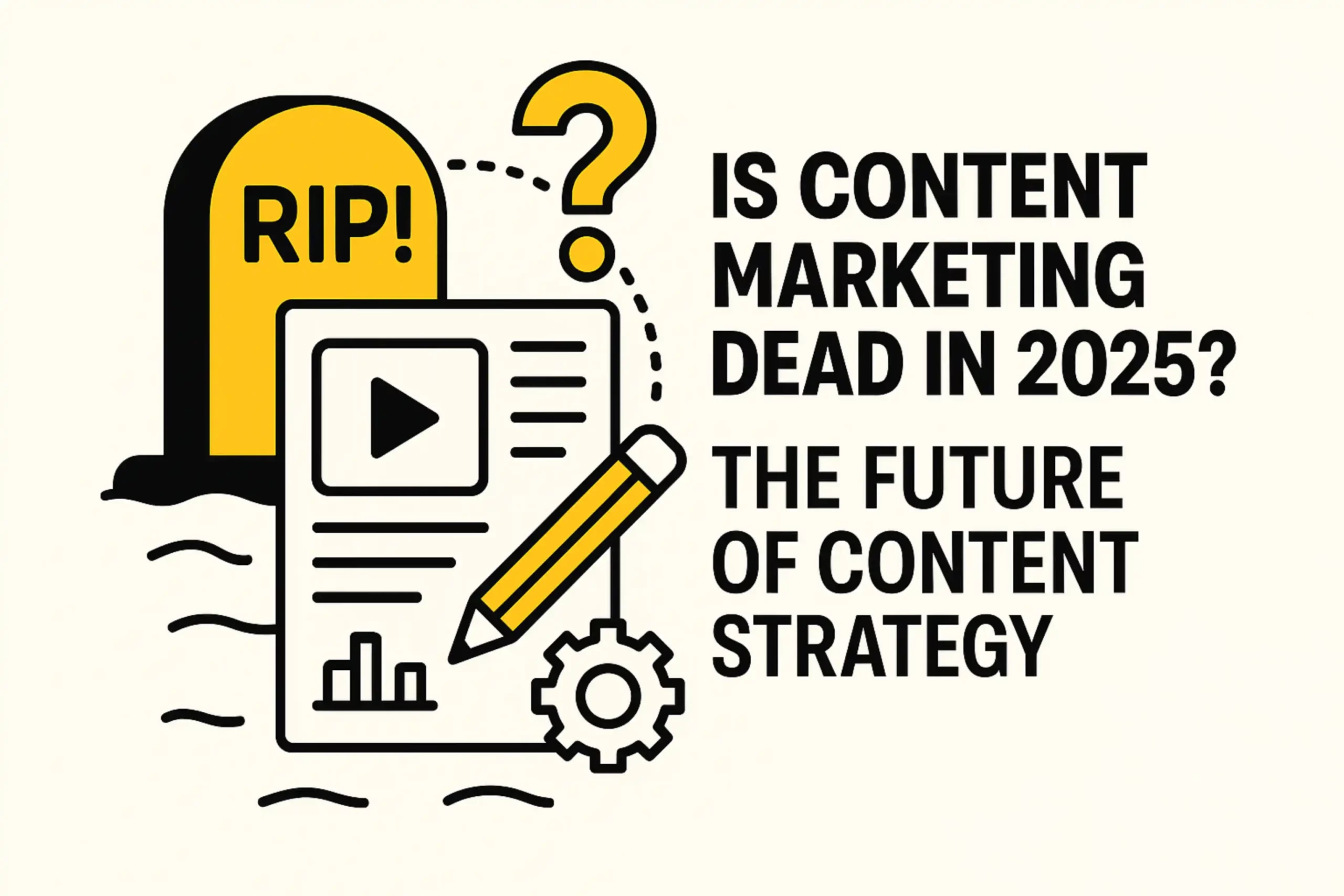When you search for health information on Google, there’s a damn good chance you’ll land on a Healthline article. And that’s no accident.
Healthline doesn’t just compete in the health space — they dominate it. We’re talking about a website that ranks for over 2.2 million keywords in Google’s top 10, pulls in 96.6 million monthly visits, and sits comfortably at #3 in the Health category 1. That’s not luck. That’s a masterclass in SEO execution.
Why Healthline Owns Health Search
But here’s what makes Healthline’s story fascinating: they’re not just winning with content volume. They’re winning with a sophisticated approach to E-E-A-T (Experience, Expertise, Authoritativeness, Trustworthiness) that most health websites can’t even dream of replicating. They’ve built a content machine that satisfies both Google’s algorithms and real human needs.
The health niche is brutal. It’s what Google calls YMYL (Your Money or Your Life) content, which means they scrutinize every piece of health advice with the intensity of a medical board exam. Yet Healthline has not only survived this environment — they’ve thrived in it.
The Numbers Behind the Success
Let’s start with the raw data, because Healthline’s performance metrics tell a story that most websites can only fantasize about.
According to Similarweb data from April 2025, Healthline attracts 96.6 million monthly visits 2. What’s more impressive is their keyword dominance: 2,222,143 keywords in Google’s top 10 positions 3. Their website has 46,189 pages that rank, with around 34,000 pages in their Health and Nutrition subfolders driving the majority of traffic 4.
The efficiency is remarkable. With a page-one keyword ranking ratio of over 40%, Healthline demonstrates what happens when content strategy meets technical excellence 5. Most websites struggle to get even 10% of their pages ranking on page one.
Healthline currently holds the #3 position in the Health category in the United States. They consistently outperform established competitors like WebMD, which they first surpassed in monthly visitors back in 2019 with 81.3 million visitors compared to WebMD’s 75.9 million 6.
Since 2012, when they had only 2,140 pages showing up in Google’s organic results, they’ve averaged about 4,404 new ranking pages per year — roughly 12 new pages per day 3. That’s not just content creation; that’s systematic market capture.
Content Architecture That Scales
Healthline’s content success isn’t accidental. They’ve built a systematic approach that allows them to dominate search results while maintaining quality at scale.
Template-Driven Content Strategy
The foundation of Healthline’s content machine is their template-driven approach. They use a consistent title template: {health problem} followed by relevant combinations like “causes,” “symptoms,” “treatment,” “diagnosis,” “risks,” “prevention,” or “pictures” 4.
For example, their “Crackling in Ear: Causes, Symptoms, Remedies, Treatment” follows this pattern. But here’s where it gets sophisticated: while the structural template remains consistent, the content within each template is uniquely tailored to specific search intent.
The “crackling in ear” article includes home remedies because that’s what searchers want for this issue. Their “wrist pain” content focuses on exercises because that’s the most relevant treatment. Their “contact dermatitis” article includes visual confirmation photos because people need to see what the condition looks like 4. Same template, different execution based on user intent.
SERP Real Estate Stacking
One of Healthline’s most sophisticated strategies is owning multiple positions in search results for the same query. This isn’t keyword cannibalization — it’s strategic SERP domination.
They achieve this by creating complementary content pieces targeting different aspects of the same search intent. For a single health topic, they might publish a comprehensive guide, a quick reference article, a product review, and a FAQ-style piece. Each serves a different user need while targeting overlapping keywords.
They use tools like Airtable to track content coverage and ensure new ideas don’t conflict with existing content 8. Before commissioning any new content, they check it against existing coverage to identify opportunities for complementary rather than competing content.
Content Refresh Strategy
Perhaps most importantly, Healthline dedicates approximately 50% of their editorial resources to updating existing content rather than creating new pieces 8. They have dedicated “update editors” who revisit top-performing URLs quarterly, ensuring information remains current and accurate.
This systematic approach to content maintenance is resource-intensive but essential for maintaining authority in YMYL topics. Update timestamps are prominently displayed in search results, signaling content freshness to both users and search engines.
The E-E-A-T Playbook for Health Content
Healthline’s approach to E-E-A-T isn’t just about checking boxes — it’s about building genuine authority that satisfies both algorithmic requirements and user trust.
The Medical Review Revolution
After experiencing a traffic decline following Google’s helpful content update, Healthline completely overhauled their content review process 9. Every piece of content now undergoes medical review by qualified healthcare professionals. Articles display clear “Medically reviewed by” attributions with the reviewer’s credentials prominently featured.
The medical review process involves multiple layers. Content is first written by health experts rather than general marketers, then reviewed by medical professionals with relevant specializations. For an audiology article, they use an audiologist reviewer. For nutrition content, they employ registered dietitians.
Expert Author Strategy
Healthline has moved away from using general content writers to employing health experts as primary authors. Their content is now written by registered dietitians, licensed therapists, medical doctors, and other healthcare professionals with direct experience in their subject areas 9.
Author bylines include detailed credential information and link to comprehensive author bio pages. These bio pages showcase the author’s education, professional experience, certifications, and other published work.
Off-Site Authority Building
Healthline’s most sophisticated E-E-A-T strategy involves using their medical experts to build authority beyond their own website. They systematically work with expert authors to generate external coverage and backlinks that validate their expertise 9.
The process works like this: Healthline’s medical experts provide commentary, data, and insights to external publications on relevant health topics. When publications like Medical News Today or major newspapers use their expert commentary, they link back to the expert’s bio page on Healthline’s website.
One example involves Dr. Janet Brito, whose expert commentary has been featured across numerous external publications, resulting in over 47 linking domains pointing to her Healthline bio page 9. This external validation creates compelling evidence of expertise that goes beyond self-proclaimed credentials.
The 150-Member Medical Affairs Team
Healthline maintains a Medical Affairs Team of approximately 150 members dedicated to content review and accuracy verification 8. This team includes physicians, pharmacists, registered dietitians, and other healthcare professionals across various specializations.
The team’s role extends beyond simple fact-checking. They evaluate content for medical accuracy, appropriate tone, potential harm, and compliance with medical communication standards.
Technical SEO Foundations
Healthline’s content success is built on solid technical foundations that enable their content to perform at scale.
Their site architecture uses clear topical silos (/health/, /nutrition/, /wellness/, /mental-health/) that help search engines understand content relationships and expertise areas 8. Within each silo, they maintain consistent URL patterns that signal content hierarchy and topic focus.
They use structured data extensively, including MedicalWebPage, FAQPage, HowTo, and Review schema markup across different content types 8. The MedicalWebPage schema allows them to specify medical review information, author credentials, and content accuracy signals in machine-readable format.
One creative technical implementation involves repurposing the deprecated meta keywords tag for internal personalization. While meta keywords no longer influence search rankings, Healthline uses this field to store Sailthru tags for on-site content personalization 8.
Their internal linking strategy creates powerful content relationships that distribute authority throughout their site. Every article includes links up to relevant hub pages and sideways to related content within the same topic cluster 8.
Lessons for Your SEO Strategy
Healthline’s approach offers actionable insights for businesses of all sizes, but the key is understanding which strategies can be adapted to your resources and industry.
What Small Businesses Can Implement
Template-Driven Content Creation: Even with limited resources, small businesses can develop content templates for their industry. A local fitness studio could create templates for exercise guides, nutrition tips, and injury prevention content.
Expert-First Content Approach: Instead of hiring general writers, work directly with industry experts who have practical experience. A financial services company could work with certified financial planners rather than general business writers.
Systematic Content Updates: Allocate a portion of your content budget to updating existing high-performing content rather than only creating new pieces. Even dedicating 20-30% of content resources to updates can significantly improve search performance.
Clear Authority Signals: Implement clear author bylines with credentials, add “reviewed by” attributions when possible, and create detailed author bio pages. These signals cost little to implement but provide significant E-E-A-T benefits.
E-E-A-T Strategies for Non-Health Sites
While Healthline operates in the heavily scrutinized health space, their E-E-A-T principles apply across industries, especially those touching on financial, legal, safety, or other YMYL topics.
Financial Services: Implement similar expert review processes with certified financial planners, CPAs, or other credentialed professionals. Display professional licenses and certifications prominently.
Legal Content: Have practicing attorneys review legal content, display bar admissions and specializations, and include appropriate disclaimers about the limitations of general legal information.
Technology and Cybersecurity: Feature content from certified security professionals, display relevant certifications and professional affiliations, and demonstrate practical experience with real security implementations.
Common Implementation Pitfalls
Surface-Level Expert Involvement: Simply adding expert bylines without genuine expert involvement in content creation doesn’t fool search engines or users. The expertise must be authentic and evident in the content quality.
Inconsistent Implementation: Implementing E-E-A-T signals on some content but not others creates credibility gaps. Develop systematic approaches that can be applied consistently across your content library.
Neglecting Content Maintenance: Creating great content without maintaining it leads to declining authority over time. Budget for ongoing content maintenance from the beginning.
Key Takeaways
Healthline’s SEO dominance isn’t the result of clever tricks or algorithm manipulation — it’s the outcome of systematic investment in genuine expertise, content quality, and user value. Their approach offers a blueprint for sustainable SEO success that transcends algorithm updates and industry changes.
The core lesson from Healthline’s strategy is that authentic expertise creates defensible competitive advantages. While competitors can copy content formats or technical optimizations, they can’t easily replicate years of relationship building with medical professionals, systematic authority development, and comprehensive quality control processes.
For SEO professionals, Healthline demonstrates the importance of thinking beyond traditional optimization tactics. Their success comes from understanding that search engines increasingly reward genuine authority and user value over technical manipulation.
Small businesses and growing companies can implement scaled versions of Healthline’s strategies by focusing on authentic expertise within their organizations, systematic content creation processes, and consistent quality standards. The key is starting with strategies that match current resources while building toward more sophisticated implementation over time.
Whether you’re managing SEO for a health website or any other industry, Healthline’s approach offers actionable insights for building long-term search success. The investment in expertise, quality, and systematic execution may be substantial, but the results speak for themselves: sustainable dominance in one of the most competitive and scrutinized content categories on the internet.
- Similarweb. (2025, April). healthline.com Traffic Analytics, Ranking & Audience. Retrieved from https://www.similarweb.com/website/healthline.com/
- Similarweb. (2025, April). healthline.com Website Analysis for April 2025. Retrieved from https://www.similarweb.com/website/healthline.com/
- Avalanche Growth. (2024, January). Healthline.com’s SEO Mastery: Ranking for 2 Million Keywords. Retrieved from https://avalanchegr.com/seo/healthline-insane-seo-strategy
- Ahrefs. (2023, April). Healthline’s Content Anatomy: 5 SEO Insights to Learn From. Retrieved from https://ahrefs.com/blog/healthline-seo-case-study/
- Sistrix. (2023). Healthline Nutrition: SEO Strategy, Teams and Experts! Retrieved from https://www.sistrix.com/blog/healthline-nutrition-seo-strategy/
- MM&M Online. (2019, July). Healthline beats WebMD in monthly visitors for first time. Retrieved from https://www.mmm-online.com/home/channel/media-news/healthline-beats-webmd-in-monthly-visitors-for-first-time/
- Healthline Media. (2024, November). Health Marketing Trends Shaping 2025. Retrieved from https://healthlinemedia.com/insights/2025-health-marketing-trends
- Deep‑Dive Briefing: Healthline’s SEO & E‑E‑A‑T Strategy. (2025). Internal Internal The SEO Hustler research document.
- Rise at Seven. (2023, May). EEAT on Steroids – How are ‘your money or your life’ brands doing it? Retrieved from https://riseatseven.com/blog/eeat-on-steroids-how-are-your-money-or-your-life-brands-doing-it/


